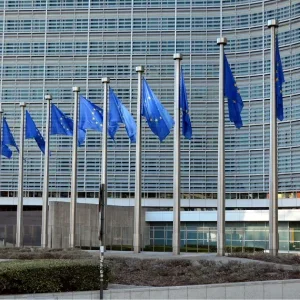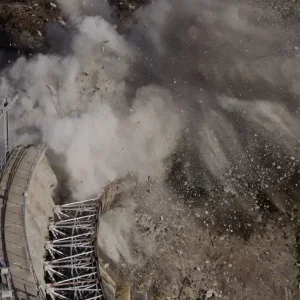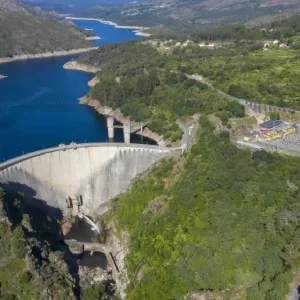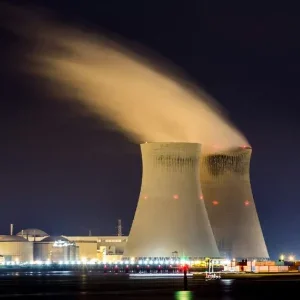
COP 28 was incredibly significant for the global nuclear industry and make no mistake about it. Seeing nuclear mentioned in the final text is a clear victory which many have been hoping and fighting for, literally for decades. All the industry representatives and nuclear advocates who have worked towards this deserve rich praise.
Even while nuclear energy gets minor billing, apparently playing only a supporting role to renewable as a climate solution in the mind of COP officials, the inclusion of nuclear energy should put another nail in the coffin of attempts to exclude it from climate policy and all-important finance initiatives.
Perhaps even more significant than the final text is the signing of the nuclear energy pledge by 25 countries, at last count, who “Commit to work together to advance a global aspirational goal of tripling nuclear energy capacity from 2020 by 2050, recognizing the different domestic circumstances of each Participant”.
This essentially gains the backing of governments for aspirational industry targets that have long been embodied in first the World Nuclear Association’s Harmony Programme and more recently the Net-Zero Nuclear initiative. While some have viewed these targets sceptically as overly ambitious (and some others as not ambitious enough), in my opinion, they are realisable goals which can be met via a concerted effort to overcome barriers, and which the world does in fact truly need to meet if it’s going to have any chance of limiting the planetary temperature rise beneath 2°C.
Whatever your thoughts on the practicality of the nuclear pledge, surely we can all agree that it is at least more realisable than the renewables and efficiency pledge, which grants only seven years for a tripling of installed generation and means that the annual rate of efficiency improvements is doubled every year to 2030. No pressure there!
It’s notable which countries have signed the nuclear pledge. This includes some of the world’s largest economies and established nuclear players like the USA, UK, Japan and South Korea. Some of the signatory countries are surprising as they do not currently have advanced plans for nuclear energy, such as Morocco, Moldova and Mongolia. This is yet another indication of the growing popularity of nuclear energy globally and that more and more countries wish to press ahead with introducing the technology.
Even more notable are the countries that have not signed the pledge. Two of the world’s leading nuclear countries are missing. Neither Russia, which leads the world in terms of reactor exports, or China, which leads the world in terms of the number of reactors under construction, have signed. It is surely not their commitment to nuclear energy that is lacking, but rather their good will towards the nations that led the pledge.
Tensions between China, Russia and other countries have risen in recent years and perhaps what the nuclear pledge symbolises more clearly than anything else are these divisions and the alliances which are forming as a result. The so-called global nuclear enterprise appears to be splitting into two or three major blocs. The spirit of international cooperation, governance and free trade which has characterised the nuclear industry for decades seems to be breaking down.
Take for example the passing of a bill in early December that will restrict Russian uranium exports into the USA. The resilience of the global nuclear fuel supply chain has long been considered a strength, but now governments are interfering with it and the repercussions are uncertain at this stage. Meanwhile, China has been forced out of the UK’s new nuclear programme, and a few years back trade tensions between China and the US caused US reactor designer Terrapower to call off its Chinese demonstration project.
These two narratives – the need to triple nuclear energy to mitigate climate change, and the need to form alliances in face of rising international tensions – are set to dominate the future development of the industry. Absent a major shift in international relations, the nuclear expansion will have to be achieved in a global atmosphere of competition rather than cooperation. In this way, it feels a little like we have travelled back in time to the 1960s.
Tripling global nuclear capacity by 2050 is a fantastic aspirational target and one that should be wholeheartedly supported, but it is important to reflect on what this means. For it means not only more nuclear energy, but the establishment of nuclear facilities in more countries and regions – including those where such developments may raise some eyebrows. Are we truly ready to accept nuclear energy supplying 20-25% of electricity in Africa – like it currently does in the USA and Europe?
The West needs to become comfortable with this prospect, and less judgmental of governments and countries that are increasingly embracing the technology. Do all people have a right to benefit from nuclear technology, or just those lucky enough to be born in rich democracies? Does climate change care about our cultural and religious differences?
Nuclear newcomer nations not only want to own their own nuclear power plants, but most want to build up their capability to construct and operate more plants in the future. Localisation is a key concept, as countries seek to employ their domestic industry in supplying parts, components and services. Over time some countries may even wish to bloom into full reactor vendor nations. This should be embraced by existing nuclear countries as, frankly speaking, we need more of these.
Regions, if not individual countries, are likely to want to achieve full nuclear energy autonomy. Pause to think about this. Considering a nuclear-powered Africa once more, are we willing to accept that in such a future the continent would almost certainly want to host its own enrichment and reprocessing facilities? These emerging nuclear regions are not going to accept foreign nuclear hegemons forever. Some of the existing non-proliferation norms and apparatus – such as insistence on the so-called gold standard – needs to be re-evaluated.
If that’s a difficult pill for Western governments to swallow, then they will perhaps also struggle with the fact that they must now start developing uranium mines on their own soil. Or else they will be competing with strong international uranium demand from regions that host the mines currently, and which may choose to prioritise their own energy needs in a future where high nuclear capacity is the norm.
It’s an undeniable fact that tripling the installed nuclear capacity base means increasing the number of all types of nuclear fuel cycle facilities – except perhaps for one. As the climate imperative for new nuclear grows and more countries form lasting alliances and-or regional partnerships, then the economic and environmental case for shared waste repositories becomes ever more obvious.
At the moment the need for each nation to develop its own nuclear waste repositories acts as a handbrake on potential newcomer countries, while countries such as Malaysia and Ireland mention high-level nuclear waste as the reason they will not even consider the technology. The successful establishment of multinational repositories could release that handbrake and allow more nations to move ahead with confidence in establishing nuclear energy programmes.
Whether or not geopolitical tensions between Russia, China and the nuclear pledge countries remain strong in the coming years, we will increasingly see a shift away from a global market for nuclear energy technology and services and towards more national autonomy and regional solutions. There are in effect two kinds of nuclear power – one measured in kilowatt-hours and another in geopolitical clout. We need to aim to triple the first, while equalising the second.
Author: David Hess – a policy expert specialising in nuclear energy; he is currently Senior Vice President of Strategy and Sustainability at DeepGEO
This article first appeared in Nuclear Engineering International magazine.






